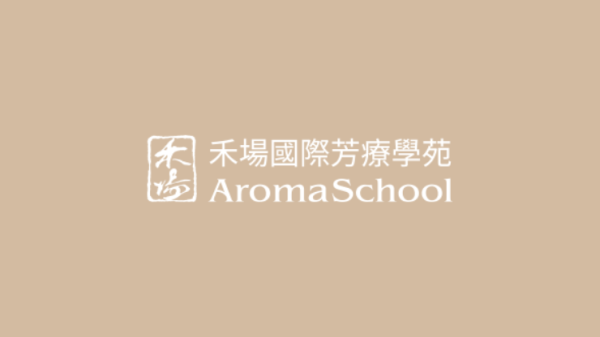從根到葉的生存智慧:薄荷如何用化學作戰、擁抱真菌、淨化土壤 / NAHA芳療協會期刊 2024 春季

驚奇的薄荷與有趣的演化
當有人提到「薄荷」這個詞時,我腦中首先浮現的是:薄荷類的莖是四方形,而且聞起來像薄荷腦。不過,身為科學家的我立刻會追問:這真的準確嗎?在我看來,香草(herbs)是「在溫帶、莖部不木質化植物中,帶有綠葉部分」的一群。從芳香的角度,鮮採植株時,香草往往比香料更芬芳。這並不是我非常熟悉的一群植物,因此撰寫這篇文章時,我必須深入文獻,重新了解「薄荷」真正意味著什麼。
翻遍文獻後,很快就發現:薄荷遠比我原先想的複雜。它們屬於薄荷屬(Mentha),隸屬於唇形科(LamiACeae)——這個科是被子植物第六大的家族。我顯然得好好向這群植物請教一番!
從基礎開始:來認識這個家族!
在醫療用途上,若以能緩解症狀的物種數量來看,香草比香料更「強勢」。唇形科囊括了許多最大、最具影響力的香草:羅勒(Ocimum spp.)、迷迭香(Salvia rosmarinus)與胡椒薄荷(Mentha × piperita)等,既是常見的風味添加,也具有強烈的芳香特性;再加上英國薰衣草(Lavandula angustifolia)與藥用鼠尾草(Salvia officinalis)等,就更令人印象深刻了!此外,這個家族也包含無數觀賞植物。
唇形科的次級代謝物種類繁多且多樣,成員主要含有單萜、倍半萜與環烯醚萜(非典型單萜)等。這些化合物在人類健康、食品與農業方面十分有用。當我們把焦點縮小到薄荷屬時,也能看到相同的趨勢。
小知識
你或許知道,整個唇形科並非所有成員的莖都是四方形;但薄荷屬的確是四方形莖!
薄荷家族的應用與化學
薄荷(Mentha spp.)在傳統醫藥上歷史悠久。以馬薄荷(Mentha longifolia)為例,鮮品或乾品主要用於消化不良、經痛、咳嗽、氣喘、發燒與頭痛等。薄荷屬的「地上部」會產生大量的芳香化學物質,如薄荷醇、薄荷酮、異薄荷酮、薄荷呋喃、香芹酮、芳樟醇、乙酸芳樟酯與胡薄荷酮氧化物等,廣泛應用於製藥、食品、香精、化妝品、飲料與相關產業。
有趣的是,植物界已知的 13,000 種二萜類中,約有 3,000 種至少在一種唇形科植物中出現。更複雜的是,產量與精油成分會受到植物與環境交互作用的影響。
更令我著迷的是:這些化合物其實都源自相同的前驅物。這意味著什麼?我們能從中學到什麼?專家指出,化學複雜性的演化「是植物多樣化的重要推手,新的化合物往往成為關鍵創新」。多重且各異的機制,很可能共同促成了薄荷類與整個唇形科化學多樣性的演化。
拆解薄荷化學的演化
1980 年代中期,科學家開始理解:薄荷能在根部「寄居」細菌。隨即也發現,其中有些細菌不致病,有些則會致病——其他植物也觀察到類似現象。研究顯示,有些細菌對植株的生長、發育或化學組成沒有影響,但也有些會左右植株的健康與活力;在這些情況下,收成就會不理想。為避免經濟損失,產業轉而在組織培養中(無菌、可控的環境)栽培薄荷,而非在土壤中暴露於微生物的情境。
根部到底發生了什麼?
到了 1990 年代,我們知道薄荷可透過根部的傷口或天然開口發生微生物定殖。有研究者認為,某些細菌可能對代謝至關重要,但當時尚無直接證據。不過,微生物被認為能幫助薄荷對抗某些病原菌;換句話說,植物可能「引入」某些細菌以協助抗病,但也可能引來致病菌。
當研究者檢視薄荷時,發現共有 22 種細菌會定殖,大多為革蘭氏陰性。這為必要時使用抗生素根除細菌提供了線索。有趣的是,當薄荷產生具抗菌性的成分時,往往是在回應不利於自身的微生物壓力。
真菌、低肥力土壤與金屬污染
芳香植物常生長在低肥力的環境。農業上加入叢枝菌根(AM 菌)已被證實能改善多種作物的栽培;在牛至(Origanum vulgare)與薄荷上補充 AM 菌後,兩者的精油含量與營養元素含量均提高。這暗示真菌可能讓植物能在低肥力土壤中更好地生長。
然而,薄荷也以其抗真菌特性聞名:如果真菌有利於薄荷,為何薄荷還要產生抗真菌的化學物?就像細菌的例子一樣,植物也許是在抑制致病真菌、同時保留共生或有益真菌。
農地的重金屬污染正日益威脅永續農業。鎘會對玉米薄荷/野薄荷(Mentha arvensis)造成毒性,導致生長遲滯與光合作用能力下降。不過,另一項使用 AM 菌的研究顯示:它能幫助胡椒薄荷(Mentha × piperita)在以廢水灌溉的土壤中吸收金屬;鉛、鎘、鐵、錳、鋅與銅被儲存在葉片中而不致造成嚴重問題。雖然這對作為藥用品的安全性不利,卻揭示了植物在有益真菌幫助下,得以在低肥力與惡劣環境中存活的能力。
薄荷(Mentha spp.)極擅長吸收鐵與錳,因而是復育重金屬污染土壤的良好選擇。
與動物(尤其昆蟲)的互動
薄荷對動物,特別是昆蟲,往往較為「不友善」。研究者以美薄荷(Mentha pulegium,俗稱 pennyroyal)與綠薄荷(Mentha spicata)為材料,探討其主要成分(蒎酮、薄荷酮與香芹酮)對果蠅的殺蟲活性與基因毒性。結果顯示,兩者均具殺蟲效果;而綠薄荷更額外展現對果蠅基因組的致突變能力。因此,對於具備改變其他生物基因組能力的精油植物,我們在應用上應保持謹慎。
結語
這位「老」植物學家踏上了一段探索薄荷(Mentha spp.)的旅程。起初看似只是圍繞在茶、牙膏與腸胃不適的簡單散步,最後卻走進了一個由微生物、真菌與動物所「施壓」出來的化學變化、充滿複雜演化脈絡的世界。每一次變化,都讓植物更能管理自身的環境——通常是低肥力、缺水與鹽分偏高等壓力條件。薄荷韌性十足、決心堅定,令人由衷敬佩:它們靠著手邊的化學武器,做出最好的調適;在漫長歲月中,結構的些微改動,催生出專對特定挑戰的嶄新化合物。如今,超過 3,000 種萜類正等待芳療師去理解與運用;探究植物如何、為何使用它們,也為我們的用法提供了線索。令人讚嘆的是:一株沒有大腦、僅憑演化機制就能決定存亡的植物,似乎比我們更懂這個世界!
參考文獻
1.Singab, Abdel Nasser and Omayma A. Eldahshan; (2015). Medicinal Importance of Herbs & Spices; Open ACCess Journal of Medicinal & Aromatic Plants, 4 (4), http//dx.doi.org/10.4172/2167-0412.1000e160.
2.Mint Evolutionary Genomics Consortium; (2018). Phylogenomic Mining of the Mints Reveals Multiple Mechanisms Contributing to the Evolution of Chemical Diversity in LamiACeae; Molecular Plant, 11, 1084-1096.
3.Elansary, Hosam O, and Nader Ashmawy; (2013). Essential Oils of Mint Between Benefits and Hazards; Journal of Essential Oil Bearing Plants, 16 (4), 429-438.
4.Stringaro, Annarita, Vavala, Elisabetta, Colone, Marisa, Pepi, Federico, Mignogna, Giuseppina, Garzoli, Stefania, Cecchetti, Serena, Ragno, Rino, and Letizia Angiolella; (2014). Effects of Mentha suaveolens Essential Oil Alone or in Combination with Other Drugs in Candida Albicans; Evidence Based Complementary Alternative Medicine, 9, https://doi.org/10.1155/2014/125904.
5.Khoury, Madona, Stien, Didier, Eparvier, Veronique, Ouaini, Naim, and Marc El Beyrouthy; (2016). Report on the Medicinal Use of Eleven LamiACeae species in Lebanon and Rationalization of their Antimicrobial Potential by Examination of the Chemical Composition and Antimicrobial ACtivity of their Essential Oils; Evidence Based Complementary Alternative Medicine, 17, https://doi.org/10.1155/2016/2547169.
6.Verma, R. S., Rahman, L., Verma, R. K., Chauhan, A., Yadav, A. K., and A. Singh; (2010). Essential Oil Composition of Menthol Mint (Mentha arvensis) and Peppermint (Mentha piperita) Cultivars at Different Stages of Plant Growth from Kumaon Region of Western Himalaya; Open ACCess Journal of Medicinal and Aromatic Plants, 1 (1), 13-18.
7.Johnson, Sean R., Bhat, Wajid Waaheed, Bibik, JACob, Turmo, Aiko, Hamberger, Britta, Evolutionary Mint Genomics Consortium, and Bjorn Hamberger; (2019). A Database-driven ApproACh Identifies Additional Diterpene Synthase ACtivities in the Mint Family (LamiACeae); Journal of Biological Chemistry, 294 (4), 1349-1362.
8.Srivastava, R. K., Singh, A. K., Kalra, A., Bansal, R. P., Tomar, V. K. S., Bahl, J. R., Naqvi, A. A., Sharma, S. and Sushil Kumar; (2000). Optimum Crop Age of Menthol Mint Mentha arvensis cv., Kosi Crops in the Indo-gangetic Plains for High Yields of Menthol Rich Essential Oil; Journal of Medicinal and Aromatic Plants Sciences, 22 (1B), 771-773.
9.Mint Evolutionary Genomics Consortium; (2018). Phylogenomic Mining of the Mints Reveals Multiple Mechanisms Contributing to the Evolution of Chemical Diversity in LamiACeae; Molecular Plant, 11, 1084-1096.
10.Debergh, P. C. and A. M. Vanderschaeghe; (1988). Some Symptoms Indicating the Presence of BACterial Contaminants in Plant Tissue Cultures; ACta Horticulturae: BACterial and BACteria-like Contaminants of Plant Tissue Cultures, 225, 77-81.
11.Bastiaens, L., Maene, L., Harboui, Y., et al; (1983). The Influence of AntibACterial Products on Plant Tissue Culture; Mededelingen van de FACulteit Landbouwwetenschappen, Rijksuniversiteit Gent, 48 (1), 13-24.
12.Kneifel, W. and W. Leonhart; (1992). Testing of Different Antibiotics Against Gram-positive and Gram-negative BACteria Isolated from Plant Tissue Culture; Plant Cell, Tissue and Organ Culture, 29, 139-144.
13.Reed, Barbara M., Buckley, Patricia M., and TrACi N. DeWilde; (1995). Detection and Eradication of Endophytic BACteria from Micropropagated Mint Plants; In Vitro Cellular & Developmental Biology - Plant, 31 (1), 53-57.
14.Cassells, A. C.; Problems in Tissue Culture: Culture Contamination. In: Debergh, P. C., and R. H. Zimmerman, eds. Micropropagation Technology and Application. Dordrecht, The Netherlands: Kluwer ACademic Publishers; 1991, 31-44.
15.Buckley, Patricia M., DeWilde, TrACi N., and Barbara M. Reed; (1995). CharACterization and Identification of BACteria Isolated from Micropropagated Mint Plants; In Vitro Cellular & Developmental Biology – Plant, 31 (1), 58-64.
16.Buckley, Patricia M., DeWilde, TrACi N., and Barbara M. Reed; (1995). CharACterization and Identification of BACteria Isolated from Micropropagated Mint Plants; In Vitro Cellular & Developmental Biology – Plant, 31 (1), 58-64.
17.Nell, Monika, Wawrosch, Christoph, Steinkellner, Siegrid, Vierheilig, Horst, Kopp, Brigitte, Lossi, Andreas, Franz, Chlodwig, Novak, Johannes, and Karin Zitterl-Eglseer; (2010). Root Colonization by Symbiotic Arbuscular Mycorrhizal Fungi Increases Sesquiterpenic ACid Concentrations in Valeriana officinalis L.; Planta Medica, 76 (4), 393-398.
18.Gupta, M. I., Prasad, A., Ram, M., and S. Kumar; (2002). Effect of the Vesicular-arbuscular Mycorrhizal (VAM) Fungus Glomus fasciculatum on the Essential Oil Yield Related CharACters and Nutrient ACquisition in the Crops of Different Cultivars of Menthol Mint (Mentha arvensis) Under Field Conditions; Bioresource Technology, 81 (1), 77-79.
19.Karagiannidis, N., Thomidis, T., Lazari, D., Panou-Filotheou, E., and C. Karagiannidou; (2011). Effect of Three Greek Arbuscular Mycorrhizal Fungi in Improving the Growth, Nutrient Concentration, and Production of Essential Oils of Oregano and Mint Plants; Scientia Horticulturae, 129 (2), 329-334.
20.Zaid, Abbu, Bhat, Javaid A., Wani, Shabir H., and Khalid Z. Masoodi; (2019). Role of Nitrogen and Sulfur in Mitigating Cadmium Induced Metabolism Alterations in Plants; The Journal of Plant Science Research, 35 (1), 121-141.
21.Qayyum, Muhammad Farooq, ur Rehman, Muhammad Zia, Ali, Shafaqat, Rizwan, Muhammad, Naeem, Asif, Maqsood, Muhammad Aamer, Khalid, Hinnan, Rinklebe, Jorg, and Yong Sik Ok; (2017). Residual Effects of Monoammonium Phosphate, Gypsum and Elemental Sulfur on Cadmium Phytoavailability and Translocation from Soil to Wheat in an Effluent Irrigated Field; Chemosphere, 174, 515-523.
22.Elgharably, A., and Nivien Allam; (2013). Effect of Arbuscular Mycorrhiza on Growth and Metal Uptake of Basil and Mint Plants in Wastewater Irrigated Soil; Egyptian Journal of Soil Science, 53 (4), 613-625.
23.Franzios, Gerasimos, Mirotsou, Maria, Hatziapostolou, Emmanouel, Kral, Jiri, Scouras, ZACharias G., and Penelope Mavragani-Tsipidou; (1997). Insecticidal and Genotoxic ACtivities of Mint Essential Oils; Journal of Agricultural and Food Chemistry, 45 (7), 2690-2694

DorothyBelle(DB)Poli 博士為美國維吉尼亞州羅諾克學院(Roanoke College)生物學終身教授,同時也是維吉尼亞自然歷史博物館研究助理。她是研究演化的植物生理學家,探討植物激素如何影響「軸(axis)」的形成。
DB 於 2005 年獲馬里蘭大學植物生物學博士學位;另於 Aromahead Institute 取得芳療師認證。她共同主持 Dragon Research Collaborative,一個跨領域研究團隊,探索植物化石如何促成世界各地的「龍」傳說。
聯絡方式:poli@roanoke.edu。
延伸閱讀
- 禾場專業芳療課程總覽,1000小時100種以上的芳療課程滿足專業芳療師的需求
- 國際認證NAHA IPFA 芳療認證入門課程
- 芳療是什麼?精油應用方式與保存技巧全解析
- 芳療初學者必讀:為什麼你需要上專業的芳療課? / Dr.Gracie 許藍方
- 精油是什麼?完整解析精油種類與功效
- 芳療詞彙總覽:精油英文與拉丁文解析
- 精油的正確用法:讓專家告訴你
- 精油推薦必看︱挑選適合的天然精油、種類、使用方法
- 精油香氣排行榜:選購指南與專家推薦
- 世界首創香氣資料庫 / 收錄近4萬篇芳療個案文獻資料庫
- 2024最新 市面上40大知名人氣精油品牌專業性評比出爐,精油品牌排名推薦完全攻略
- 【芳療師必須收藏】 100種單方精油使用方法及功效速記查詢表
- 關於芳療 Aromatherapy / 維基百科
- What does rosemary do to your brain? / BBC
- Aromatherapy eased my cancer stress / BBC
- Does aromatherapy massage reduce job-related stress? Results from a randomised, controlled trial
- 精油愛好者必讀:一次搞懂精油功效、用法與禁忌
- 完全有機認證 / 沐禾 AromaHarvest 唯一針對治療用設計的芳療品牌
